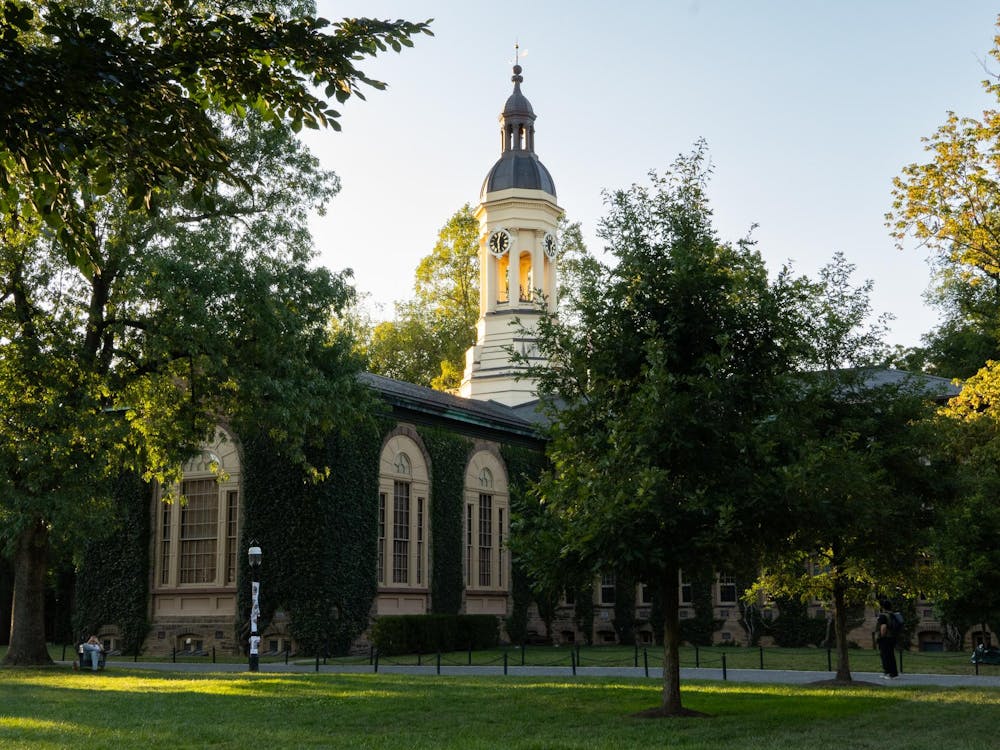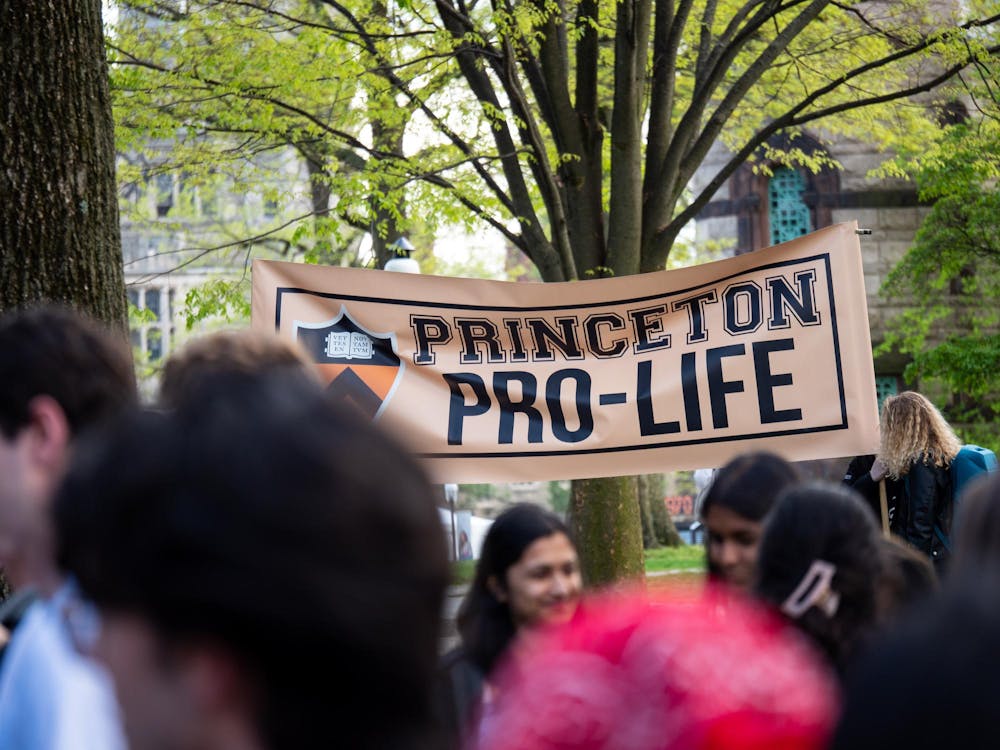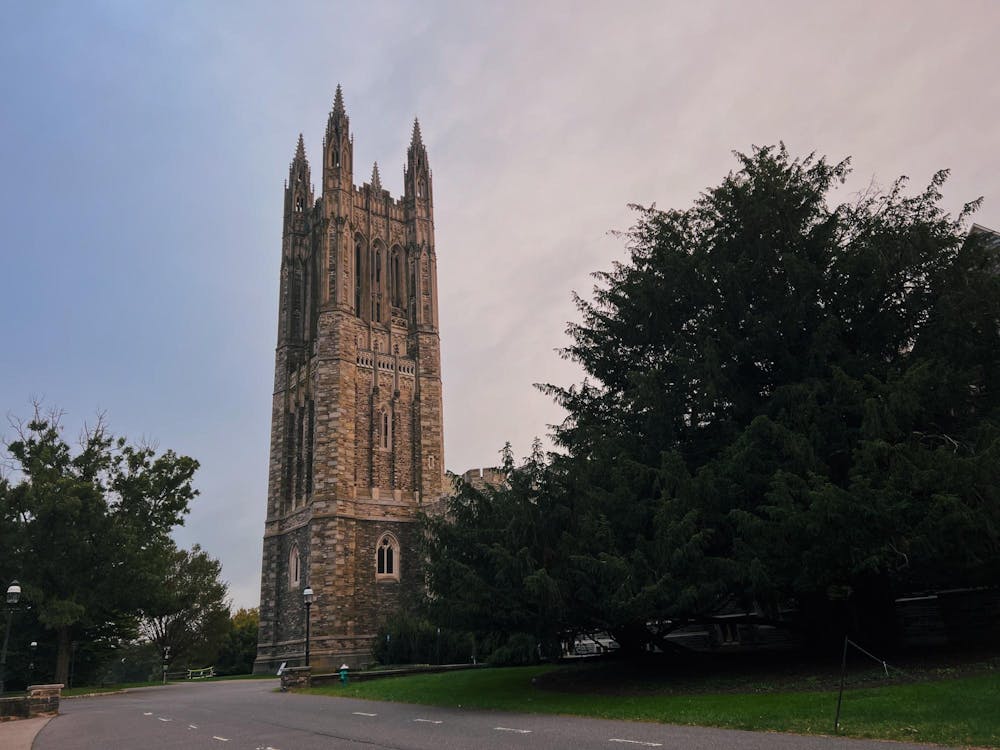More than 15 percent of female undergraduates reported experiencing non-consensual vaginal penetration during their time at the University, according to an unpublished survey conducted in 2008 by several University offices.
The survey, a version of a standard survey format called the “Sexual Experience Survey” was developed in 2007 by Mary Koss, a University of Arizona Public Health professor specializing in sexual violence, and consisted of 17 multiple choice questions. The survey estimates the frequency of different types of unwanted sexual acts and measures “behaviors that meet legal definitions of various sex crimes,” according to the website of the Measurement Instrument Database for the Social Sciences.
The survey presented different scenarios relating to sexual experiences and asked respondents how frequently they had experienced those incidents while they had been enrolled at the University.
The results suggest that rates of sexual assault and sexual harassment on campus may be substantially higher than the rate at which incidents of sexual misconduct are reported or adjudicated. However, Princeton’s numbers are slightly lower than the national average. National surveys conducted in the early 2000s estimate that about one in five women are raped during their college careers.
It remains unclear why the survey was never publicly released, but one University administrator said the University did not want to draw unwanted attention by publicizing the report’s findings when they were in line with national averages.
The survey was completed by 1,595 graduate and undergraduate students from the classes of 2008, 2009, 2010 and 2011, and aimed to “establish and quantify the extent to which Princeton University students experience assault,” according to a summary of the survey results.
A confidential summary of the survey’s data and a report detailing the results for female undergraduate students were provided to The Daily Princetonian.
According to the survey, more than 28 percent of female undergraduate students reported that they were touched in a sexual manner or had their clothes removed without consent. About 12 percent said they were forced to receive or perform oral sex, and an additional 14 percent were said they were victims of attempted forced oral sex. Another 6.2 percent of female undergraduate respondents said they experienced attempted non-consensual vaginal penetration.
Of the 809 female undergraduates who filled out the undergraduate female survey, more than 120 answered affirmatively to the statement, “A man put his penis into my vagina, or someone inserted fingers or objects without my consent.”
Of the respondents, a disproportionate 70 percent were female. Otherwise, the demographics of the respondents are consistent with those of the broader student population according to the University’s official enrollment statistics at the time. Of the students who filled out the survey, 65 percent were white, 13 percent were Asian, 8 percent were Latino and 8 percent were African/African-American. In addition, 91.5 percent of survey respondents identified as heterosexual.
Between 2006 and 2009 — which includes the year in which the survey was distributed — the University ruled on four cases of sexual misconduct, according to reports provided by Associate Dean of Undergraduate Students Victoria Jueds, who oversees disciplinary proceedings. Of these, two students were placed on disciplinary probation, one student was suspended and one was required to withdraw from the University.
Jueds said she could not comment on the total number of cases involving sexual assault and sexual harassment that have come before the Committee on Discipline. According to Jueds, ODUS only keeps records for students formally found responsible for disciplinary violations. If a student considers filing a formal complaint but never does, or if a student is charged and is found not responsible, ODUS does not maintain a record.

Between the calendar years 2006 and 2008, 44 cases of forcible sex offenses were reported to the Department of Public Safety, according to the Department’s annual reports. These numbers include all cases reported within the University campus and are not limited to acts allegedly committed by students.
More recently, between 2009 and 2012, five students were disciplined by ODUS for acts of sexual misconduct. Of these, one student was suspended for “an act of non-consensual penetration,” two students were suspended for sexual assault and two students were placed on disciplinary probation for sexual harassment.
Forty forcible sex offenses were reported to Public Safety between 2009 and 2011.
‘Not anything unexpected’
According to the survey’s data summary, the survey was intended to help the University “assess the need for survivor support and education services and to utilize the information to improve prevention techniques on the Princeton campus.”
However, it remains unclear if the data gathered from the survey has been used to influence University policy.
Amada Sandoval, Director of the Women’s Center, said that in recent years, the Sexual Harassment/Assault Advising, Resources and Education program has been focusing more on bystander intervention and prevention rather than awareness, and there have been changes to the disciplinary process.
SHARE is a division of University Health Services.
However, Sandoval could not comment on whether these changes were a result of the survey, whose results she said were “not anything unexpected.”
Although she explained she was not aware of the precise reasons the survey’s results were kept private, Sandoval said the results were probably never released because they were consistent with national averages and because other universities do not publicize such data.
“Anything about Princeton goes international, practically, and no other universities do that, so does Princeton want to be the one to say that this many of our students are sexually assaulted? I don’t think so,” Sandoval said.
Whether other Universities have conducted similar surveys or released results to the public remains unclear, but no similar statistics have been found by the ‘Prince.’
“I don’t know that there is a real benefit to releasing it,” Sandoval added. “I think if we had found something very different from the national average, that would be one thing, because that’s a real story. A story that Princeton’s rates of students who have been assaulted is on line with national averages is really not a story, but I mean in this news environment, people would make a big deal about it.”
Erica Wojcik ’09, a former president of SpeakOut — a now-inactive group that was formed in 2006 following several high-profile sexual assault and rape cases, some of which occurred during spring eating club initiations — said she did not perceive any efforts to suppress the results.
“[The administration was] always very supportive of what we did,” Wojcik said. “I didn’t perceive anything malicious.”
According to Abigail Boyer, the director of communications and outreach at the Clery Center for Security on Campus, the survey statistics are in line with the national average. According to a study done by the National Institute of Justice in November, 14-30 percent of college students “experience some type of sexual violence during their college career,” Boyer said.
‘It probably wasn’t so at Princeton’
The 2008 Sexual Experiences Survey was conducted in conjunction with the the Princeton University Survey Center — which designs surveys for faculty and administrators — by former SHARE director Suraiya Baluch, Sandoval, Dante Ricci GS and Amy Unterman ‘08, who was at the time a member of SpeakOut.
Baluch did not respond to requests for comment.
Current SHARE Director Jacqueline Deitch-Stackhouse said she could comment on the report in particular because she was not at the University when it was administered and did not want to comment on research conducted by others.
Deitch-Stackhouse said SHARE is now focused on providing bystander intervention training, in part by informing the community that one in eight Princeton students is a victim of “power-based personal violence,” a broader term which encompasses sexual assault.
“I use [the figure] to familiarize people with its prevalence on this campus because everybody knows eight people,” Deitch-Stackhouse said, adding that the figure was provided to Residential College Advisers this summer.
Ricci, who was the volunteer Men’s Program coordinator at SHARE at the time, said that the project was initiated by SHARE and Speakout, but supported by the University administration. He added he thought the data could be useful to show the student body that sexual misconduct occurs at Princeton.
“We got the impression that undergraduate students, even if they accepted the national statistic ... [were] convinced that it probably wasn’t so at Princeton,” Ricci explained. “We thought if we were going to have a conversation about sexual harassment and assault at Princeton, it would be helpful to know ... the prevalence to better serve students and help students understand the prevalence was at the University specifically.”
In addition, Sarah Erickson ’07 — who was SpeakOut’s co-founder and its president for two years — said she sought to dispel the myth that Princeton was immune from sexual assault and sexual harassment.
“We were interested in bringing awareness on campus that sexual assault does happen at Princeton, and we wanted to help change the culture in such a way that people were more receptive to that [fact],” she said.
The survey, according to Ricci, was always a side project, and SHARE has many other projects and tasks at a given time.
Although the number of incidents Public Safety or ODUS learn of are low compared to the number of incidents female undergraduates anonymously reported in the survey, Jueds said that she hopes that students will not interpret the results of the survey as an indication that the University discourages students from coming forward.
“I think that what you see when you read the policy on sexual misconduct is an unambiguous statement by the University that sexual misconduct will not be tolerated, and that is a firm commitment,” Jueds said. “It’s my hope and my belief that students, who are required to read [Rights, Rules and Responsibilities], will read that, and appreciate the commitment of this University, the sincere commitment of this University to supporting the victims of sexual misconduct and responding to violations of the policy with significant sanctions.”
In RRR, sexual assault is defined as “Any sexual physical contact that involves the use or threat of force or violence or any other form of coercion or intimidation ... [or] any sexual physical contact with a person who is unable to consent due to incapacity or impairment, mental or physical. ‘Incapacity’ or ‘impairment’ normally includes but is not limited to being asleep or under the influence of alcohol or drugs.”
Staff writer Alice Kilpatrick contributed reporting.
To view a summary of the survey results, click here.
To view a summary of the survey results for female undergraduate students, click here.
Correction: Due to an editing error the March 4 article “Survey quantifies sexual assault” mischaracterized SHARE director Jacqueline Deitch-Stackhouse’s comments on the report. She said she could not comment on the particular report because she was not at the University when it was administered.








